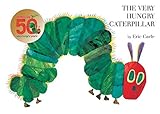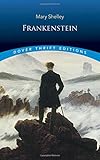

"Crazy! You're going to get yourself killed!"
Shadrach is enraged. Bootleggers have taken over his island home, using it as a base from which to run their illegal operations. The community cooperates because its silence has been bought, and times are hard. But Shadrach can't be bought. Instead, he vows to gather all the information he can to bust the criminals. He succeeds, but then chooses the wrong man to tell.


Including a special feature, die cuts, this beautiful board book edition, perfect for teaching the days of the week, offers readers an interactive experience.
"The very hungry caterpillar literally eats his way through the pages of the book—and right into your child's heart..."
—Mother's Manual
"Gorgeously illustrated, brilliantly innovative..."
—The New York Times Book Review


National Bestseller
On November 15, 1959, in the small town of Holcomb, Kansas, four members of the Clutter family were savagely murdered by blasts from a shotgun held a few inches from their faces. There was no apparent motive for the crime, and there were almost no clues.
As Truman Capote reconstructs the murder and the investigation that led to the capture, trial, and execution of the killers, he generates both mesmerizing suspense and astonishing empathy. In Cold Blood is a work that transcends its moment, yielding poignant insights into the nature of American violence.


Few creatures of horror have seized readers' imaginations and held them for so long as the anguished monster of Mary Shelley's Frankenstein. The story of Victor Frankenstein's terrible creation and the havoc it caused has enthralled generations of readers and inspired countless writers of horror and suspense. Considering the novel's enduring success, it is remarkable that it began merely as a whim of Lord Byron's.
"We will each write a story," Byron announced to his next-door neighbors, Mary Wollstonecraft Godwin and her lover Percy Bysshe Shelley. The friends were summering on the shores of Lake Geneva in Switzerland in 1816, Shelley still unknown as a poet and Byron writing the third canto of Childe Harold. When continued rains kept them confined indoors, all agreed to Byron's proposal.
The illustrious poets failed to complete their ghost stories, but Mary Shelley rose supremely to the challenge. With Frankenstein, she succeeded admirably in the task she set for herself: to create a story that, in her own words, "would speak to the mysterious fears of our nature and awaken thrilling horror -- one to make the reader dread to look round, to curdle the blood, and quicken the beatings of the heart."



When first published in 1899, The Awakening shocked readers with its honest treatment of female marital infidelity. Audiences accustomed to the pieties of late Victorian romantic fiction were taken aback by Chopin's daring portrayal of a woman trapped in a stifling marriage, who seeks and finds passionate physical love outside the straitened confines of her domestic situation.
Aside from its unusually frank treatment of a then-controversial subject, the novel is widely admired today for its literary qualities. Edmund Wilson characterized it as a work "quite uninhibited and beautifully written, which anticipates D. H. Lawrence in its treatment of infidelity."
Although the theme of marital infidelity no longer shocks, few novels have plumbed the psychology of a woman involved in an illicit relationship with the perception, artistry, and honesty that Kate Chopin brought to The Awakening. Now available in this inexpensive edition, it offers a powerful and provocative reading experience to modern readers.

In this celebrated work, his only novel, Wilde forged a devastating portrait of the effects of evil and debauchery on a young aesthete in late-19th-century England. Combining elements of the Gothic horror novel and decadent French fiction, the book centers on a striking premise: As Dorian Gray sinks into a life of crime and gross sensuality, his body retains perfect youth and vigor while his recently painted portrait grows day by day into a hideous record of evil, which he must keep hidden from the world. For over a century, this mesmerizing tale of horror and suspense has enjoyed wide popularity. It ranks as one of Wilde's most important creations and among the classic achievements of its kind.


They are an unlikely pair: George is "small and quick and dark of face"; Lennie, a man of tremendous size, has the mind of a young child. Yet they have formed a "family," clinging together in the face of loneliness and alienation.
Laborers in California's dusty vegetable fields, they hustle work when they can, living a hand-to-mouth existence. For George and Lennie have a plan: to own an acre of land and a shack they can call their own. When they land jobs on a ranch in the Salinas Valley, the fulfillment of their dream seems to be within their grasp. But even George cannot guard Lennie from the provocations of a flirtatious woman, nor predict the consequences of Lennie's unswerving obedience to the things George taught him.
"A thriller, a gripping tale . . . that you will not set down until it is finished. Steinbeck has touched the quick." —The New York Times

Harrison, NH -- Ninth-grade student Philip Malloy was suspended from school for singing along to The Star-Spangled Banner in his homeroom, causing what his teacher, Margaret Narwin, called "a disturbance." But was he standing up for his patriotic ideals, only to be squelched by the school system? Was Ms. Narwin simply trying to be a good teacher? Or could it all be just a misunderstanding gone bad -- very bad? What is the truth here? Can it ever be known?
Heroism, hoax, or mistake, what happened at Harrison High changes everything for everyone in ways no one -- least of all Philip -- could have ever predicted.
